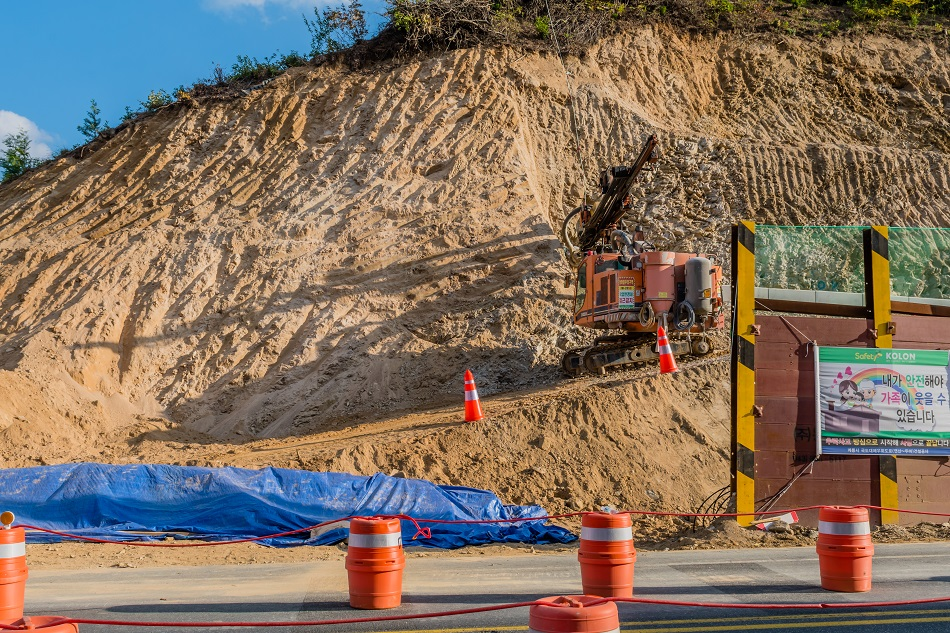
Image Credits: aminkorea/Shutterstock.com
The Korean Peninsula has witnessed much past turmoil, resulting in the Peninsula being split into two countries—North Korea and South Korea. South Korea (officially called the Republic of Korea) is located in East Asia and spans a total land area of 99,720 km2. As of 2017, the estimated population stands at 51.47 million. The country’s climate is temperate with heavy rainfall in summers. Its natural resources include coal, graphite, molybdenum, tungsten, and lead. However, the mining and quarrying sector is not the primary contributor to the country’s economy.
Over the years, South Korea has reported significant increases in its import-export activities. For instance, in 2010, imports were valued at $425.2 billion, a 32 percent increase from $323.1 billion in 2009. Meanwhile, its exports increased by 28 percent in just one year, climbing from $363.5 billion in 2009 to $466.4 billion in 2010. With an advanced industrialized economy, South Korea’s GDP continues to rise, making it the state with the thirteenth-largest GDP in the world and the fourth-largest economy in Asia.
Overview of Resources
Since 2010, Korea has become a leading global producer of cadmium, slab zinc, and steel, and a leading regional producer of refined copper, pyrophyllite, cement, zeolites, and talc. While there are competitors ahead of the nation, South Korea's mining industry still consists of some well-developed and technology-savvy companies, including both private and public firms, maintaining the state’s active participation in mining activities.
In 2010, the prominent mining company POSCO struck a deal with the South Korean government to start lithium extraction activities from seawater. The government also partnered with POSCO and invested $26 million towards constructing a lithium extraction unit which has been in operation since 2014. Meanwhile, another mining company, KORES, sought to unearth rare earth elements in Korean soil after its old iron ore mine was redeveloped in 2010. Since then, exploration programs have been conducted to study the rare element content in various mining regions within the country.
Metals
Due to the rise in domestic demand for metals, South Korea tends to depend more on imports to meet its requirements. The state was ranked the seventh-largest steel importer in the world in 2018. With a reported 8.8 million tons of steel in 2018, there has been a 15 percent increase in South Korea’s import activities since 2017.
The increase in the state’s metal importation activities began after 2009 when the trade deficit in steel products had been addressed. As such, by 2010, cadmium production went up by 67 percent, bismuth production by 66 percent, steel production by 21 percent, pig iron by 14 percent, and iron ore production by 14 percent; meanwhile, copper exports amounted to 3,864 tons; refined manganese totaling 904,347 tons, and gold exports increased to 77,804 kilos (amounting to about $2.91 billion).
Korea’s metal industry also grew significantly after 2010 because of various partnerships and technological developments. For instance, the operations of two blast furnaces by Hyundai Steel aided the country’s crude steelmaking capacity by 18.6 percent. Meanwhile, ZincOx Resources PLC assisted the Korea Recycling Plant (KRP) in treating electric arc furnace dust (EAFD) to produce zinc oxides. The plant was expanded in two phases, with each phase producing nearly 100,000 tons per year of iron and 46,000 tons of zinc oxide concentrate.
Fossil Fuels
Nearly 44.44 billion m3 of liquefied natural gas (LNG) was imported by South Korea in 2010. Since then, the country has become the leading importer of LNG in the world. Under the terms of a long-term LNG supply agreement between the state-owned Korea Gas Corp. (KOGAS) and Royal Dutch Shell plc (Shell) of the Netherlands and Total S.A. oil company of France (Total), the companies will supply 5.64 Mt of LNG worth $84 billion to KOGAS every year starting from 2013 to 2035.
Investment
South Korea’s mining sector has seen steady growth in recent times. The US-South Korea Free Trade Agreement, signed by both governments, has been in effect since the beginning of 2012. Reconstruction efforts in Japan are expected to boost demand for South Korea’s copper and steel. Hyundai Steel and POSCO have also taken key steps to upgrade blast furnaces to increase the production of iron and steel to meet the country’s growing demand for these commodities. Moreover, South Korea also has a large domestic market for rare earths and continues to find cost-effective methods to meet its industrial demand.
Some of the key challenges facing the country’s economy are the aging population, heavy dependence on imports, and a rigid labor market. Despite all this, the South Korean government is vigorously pursuing ways to strengthen its mining sector and retain its global economic presence.
Sources and Further Reading
Disclaimer: The views expressed here are those of the author expressed in their private capacity and do not necessarily represent the views of AZoM.com Limited T/A AZoNetwork the owner and operator of this website. This disclaimer forms part of the Terms and conditions of use of this website.